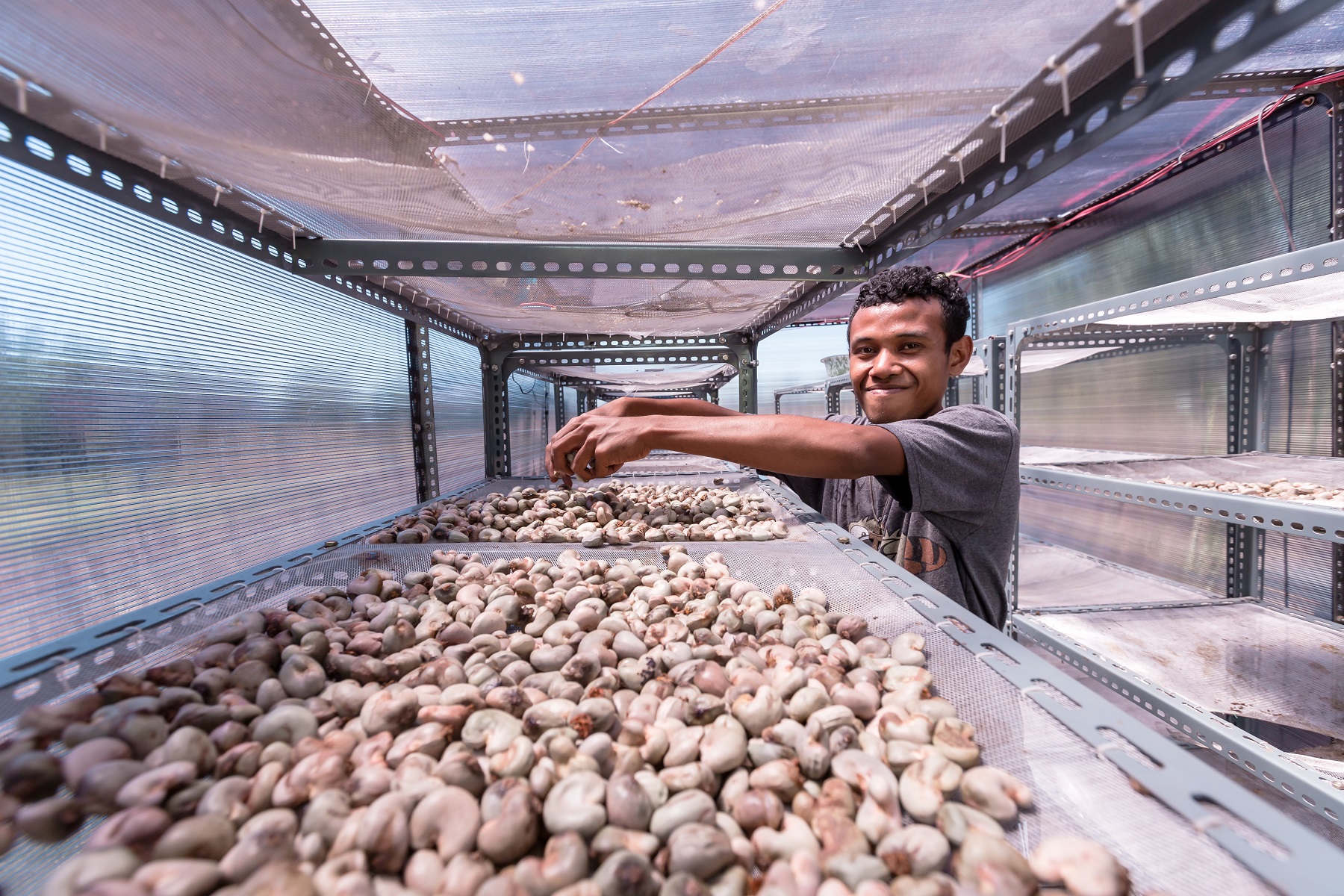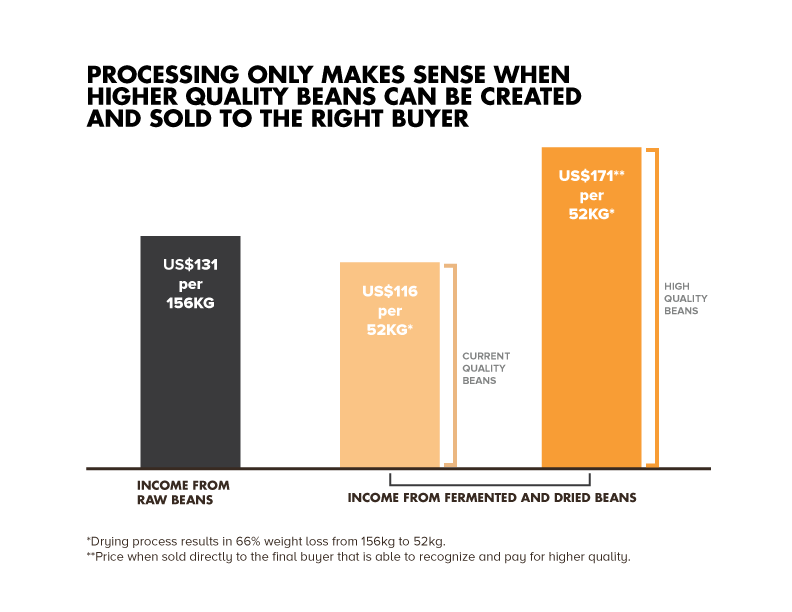
The Kopernik team conducted an experiment with cacao farmers in Tabanan, Bali by building a new Hybrid Solar Dryer (HSD) with the aim to create a more effective drying tool. We found that while the HSD has potential to reduce the drying time and produce consistent bean quality, the benefits of these improvements are only realized when accompanied by two more variables: improved fermentation techniques and, even more importantly, the right market access.1
Currently, the use of the HSD together with the improved fermentation processes to achieve a higher quality bean alone does not necessarily secure farmers a higher price. In order to fully benefit from these value added activities enabled by the improved process and technology, farmers need to have access to a buyer who can recognize and is willing to pay more for a higher quality bean.
Cacao farmers face two options2: sell the beans raw or processed (which includes fermenting and drying them). Selling processed beans actually results in less income than selling the beans raw due to the combination of extensive weight loss during the drying process and insufficient price increase per kilo.3 The only way to get a higher price for the processed beans is to create a superior quality bean to the one currently being sold by the farmers. Achieving higher quality requires technical knowledge on fermentation and drying techniques and tools that carefully monitor the temperature and oxygenation of the beans throughout both processes. The reality faced by Tabanan and other cacao farmers is that they typically do not have access to such knowledge or the markets willing to pay the higher price, so there is no incentive for the farmer to produce a higher quality bean and therefore no incentive to process the beans.
 Kopernik’s research shows that it is not enough to affect one single part of the value chain, which in this case is the processing of cacao. Rather, any improvements in processing must be accompanied by access to a market that is willing to pay for the value added beans.
Kopernik’s research shows that it is not enough to affect one single part of the value chain, which in this case is the processing of cacao. Rather, any improvements in processing must be accompanied by access to a market that is willing to pay for the value added beans.
While this experiment was done only in one geographic location, we believe that it may serve as a good case study for a wider issue of market access for smallholder farmers.
2 This insight focuses on two key scenarios, in reality, there are more than six different scenarios that depend on processing steps, different quality levels and access to different markets. For a more complete diagram of the wider range of options, click here.
3 The price is not increased in proportion with the weight reduction due to the insufficient quality of the bean.


